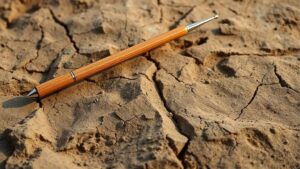Understanding Where Gold Collects in Rivers Based on Flow Patterns
Understanding Where Gold Collects in Rivers Based on Flow Patterns
The association of gold with river systems dates back centuries, with prospectors historically understanding that the dynamics of water flow play a crucial role in the distribution of gold deposits. Knowledge of where gold tends to accumulate within rivers can significantly enhance the success rate of prospecting efforts. This article aims to delve into the intricacies of how flow patterns influence gold deposition, backed by scientific explanations and real-world applications.
The Basics of Gold Occurrence in Rivers
Gold, being a heavy mineral, has unique geological properties that influence its movement within river systems. primary factors that affect where gold may settle include:
- Density and size of gold particles
- Water flow velocity
- Streambed composition
Gold particles tend to be heavier than the average river sediment, which allows them to settle in areas where water velocity diminishes, primarily in bends, pools, and behind natural obstructions.
Flow Patterns and Their Implications
Understanding the specific flow patterns in rivers is essential in predicting where gold can accumulate. River flow can generally be categorized into several key patterns:
- Meandering Rivers: In meandering rivers, the outside bends experience higher velocities resulting in erosion, while the inside bends tend to see slower flows leading to sediment deposition. Gold often collects in these slower areas.
- Fast-Flowing Sections: While gold can be transported in fast-flowing water, areas of decreased velocity, such as eddies or slack water behind rocks, serve as potential gold traps.
- Confluence Areas: The junctions where two rivers meet often result in complex flow patterns, leading to deposits of heavier materials, including gold.
Case Studies of Gold Deposits
Numerous studies of historical gold mines and modern prospecting expeditions have highlighted where gold is most commonly found in river systems:
- The Klondike Region, Canada: The Klondike River is a prime example where gold accumulated in specific sections due to its meandering nature and variations in flow speed.
- The Sacramento River, California: Prospectors have identified several prime locations along the river where bends and confluences create ideal conditions for gold deposition.
Tools for Prospecting
Prospectors utilize various tools and techniques that can be informed by understanding flow patterns:
- Panning: This traditional technique allows prospectors to isolate heavier materials from lighter sediments. Knowing where to pan–in areas of slowed water flow–is critical to success.
- Metal Detectors: These devices can help locate gold deposits hidden beneath river beds.
Addressing Common Questions
Many individuals curious about gold prospecting often have similar questions:
- Is it legal to pan for gold in rivers? Legalities vary by region, so it is vital to research local regulations and obtain necessary permits.
- How deep should I dig when prospecting? Typically, digging in areas with a sandy or gravelly bottom where water slows is more effective, usually around 6 to 12 inches deep.
Conclusion: Actionable Takeaways
Understanding where gold collects in rivers is an excellent foundation for successful prospecting. By focusing on flow patterns, prospectors can enhance their chances of discovering gold deposits. Key takeaways include:
- Target areas of slow water flow, particularly inside bends and behind natural barriers.
- Use the natural features of the river, such as confluences and pools, as prospective locations.
- Stay informed on local laws and regulations regarding gold panning to ensure compliant prospecting.
With strategic thinking and an understanding of river dynamics, gold prospectors can effectively harness nature’s own indicators of where gold may be found.


